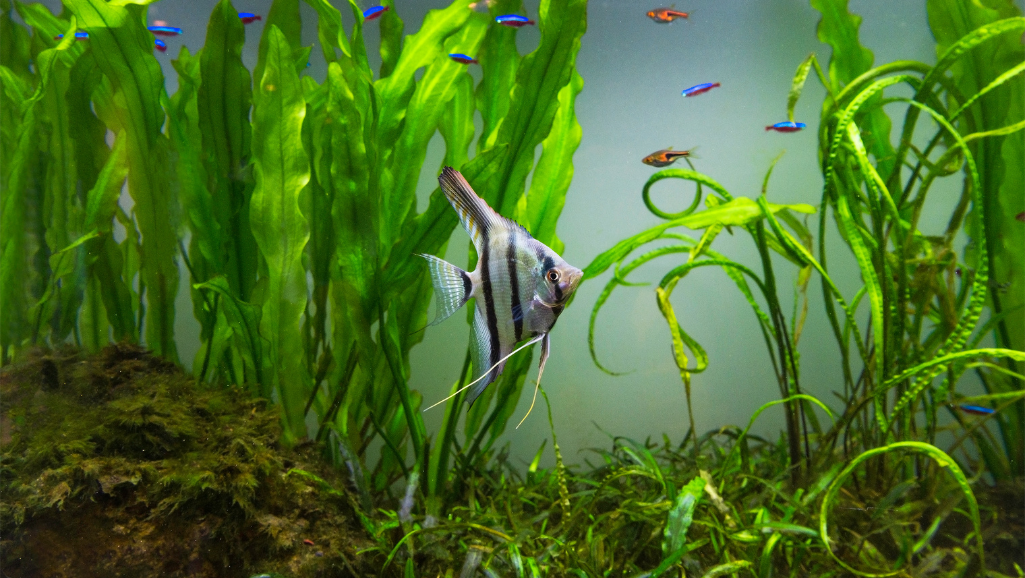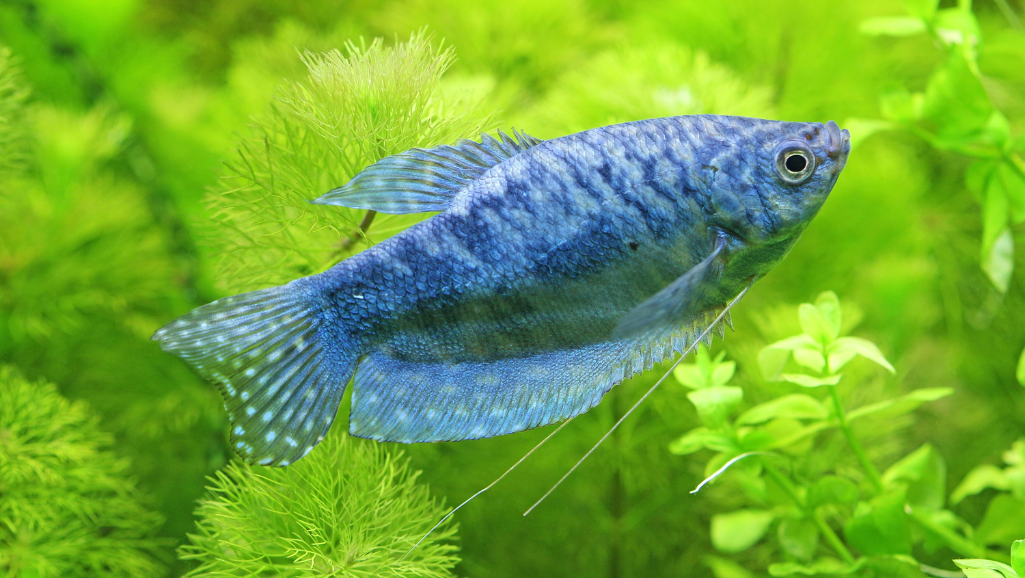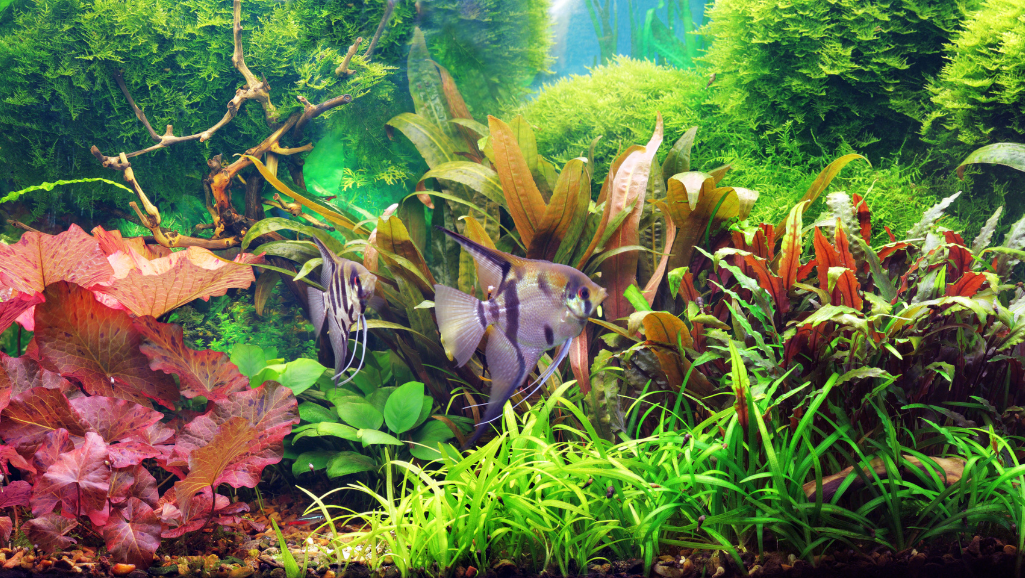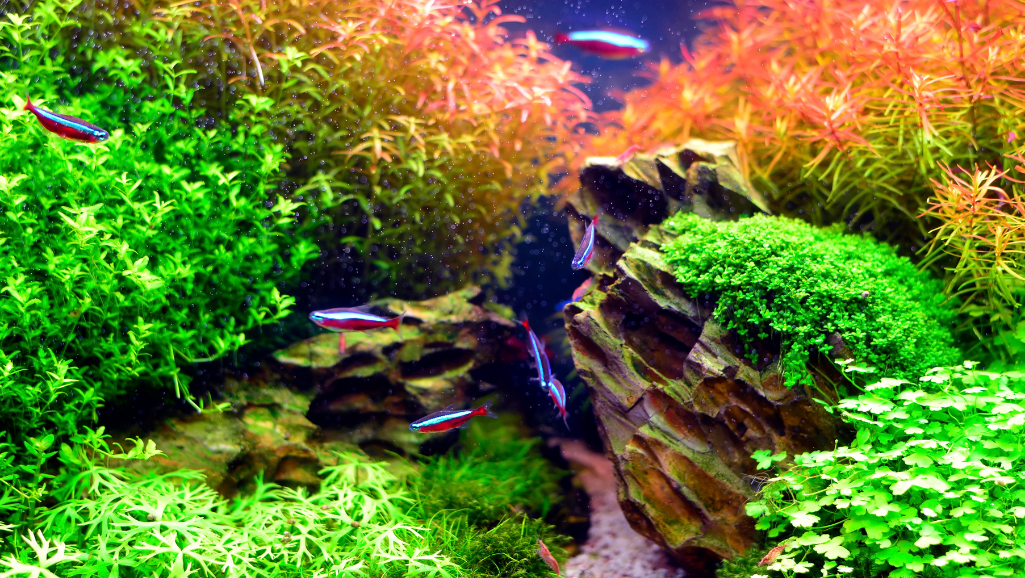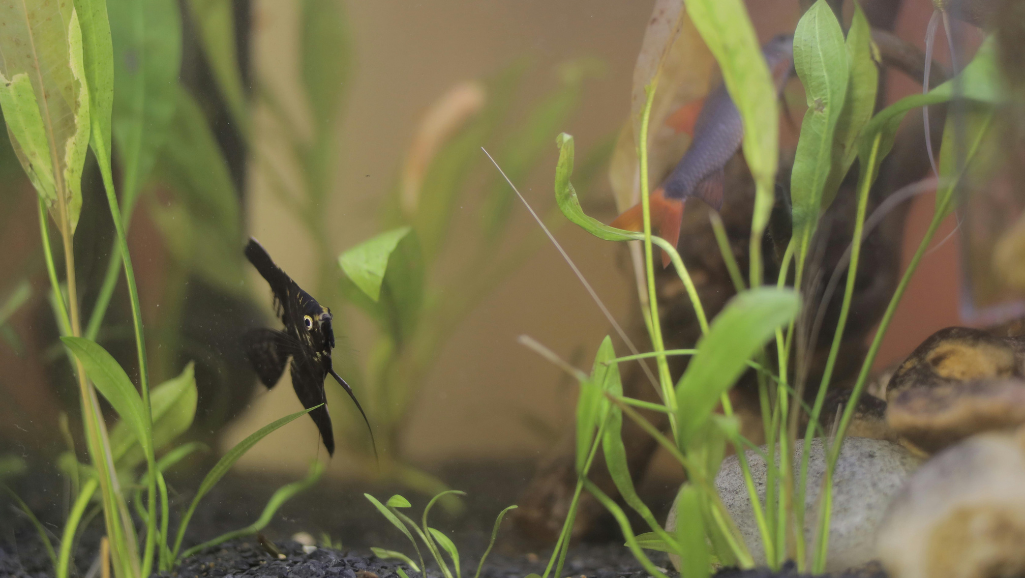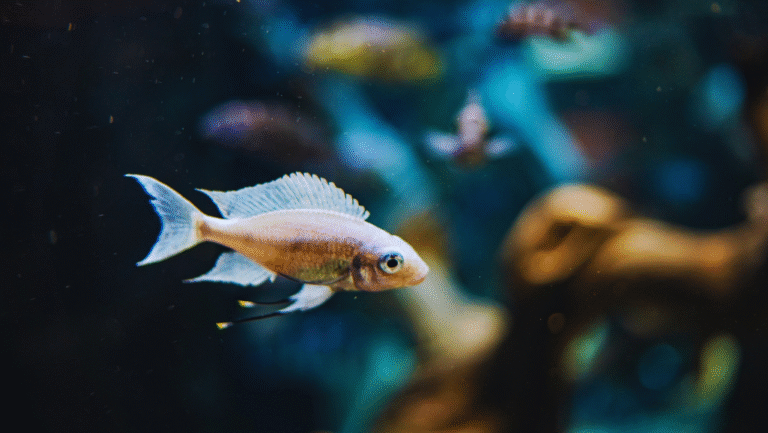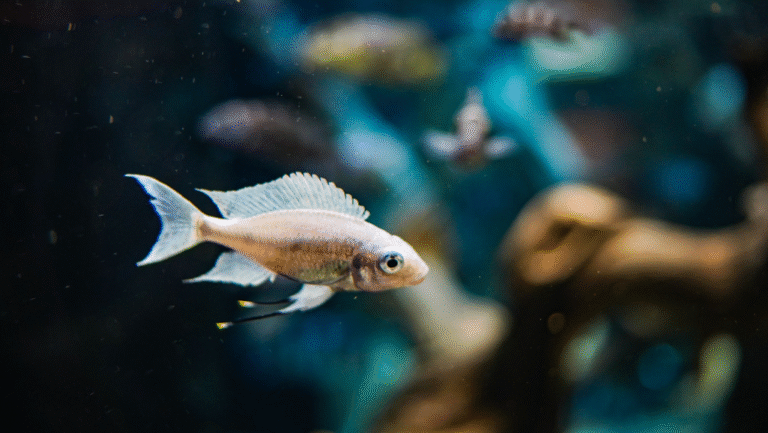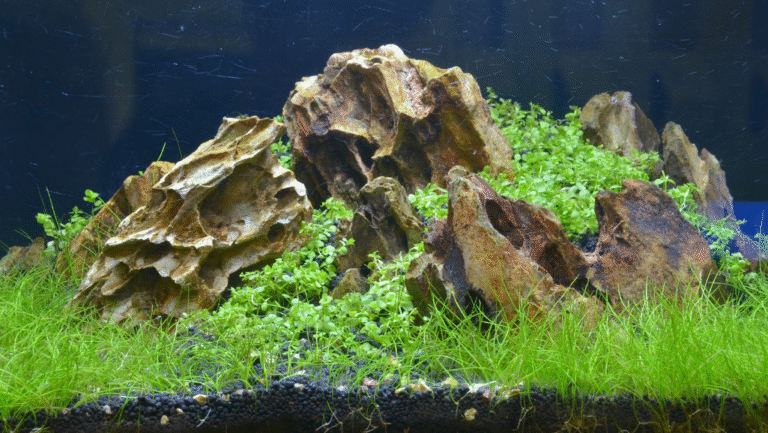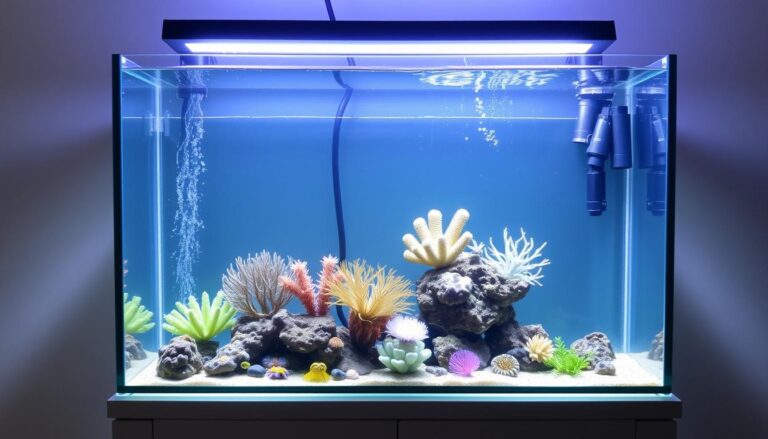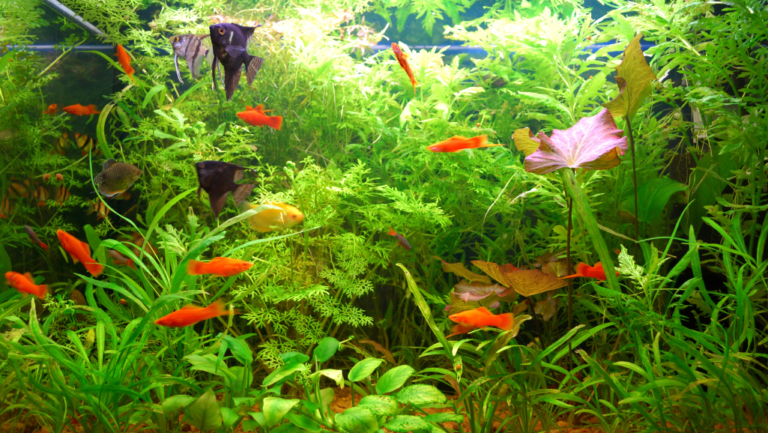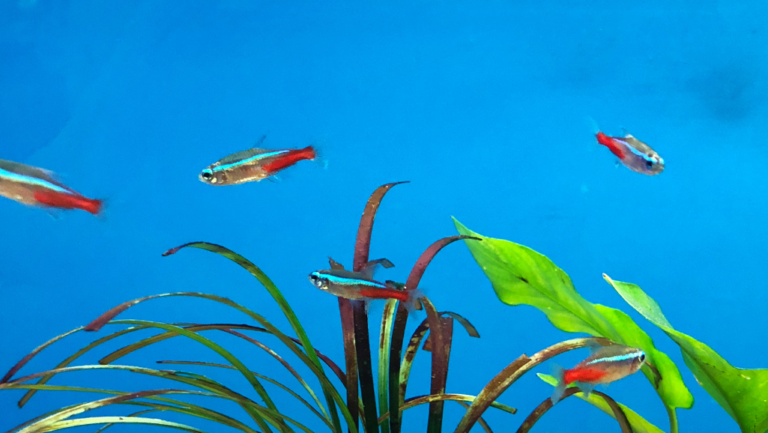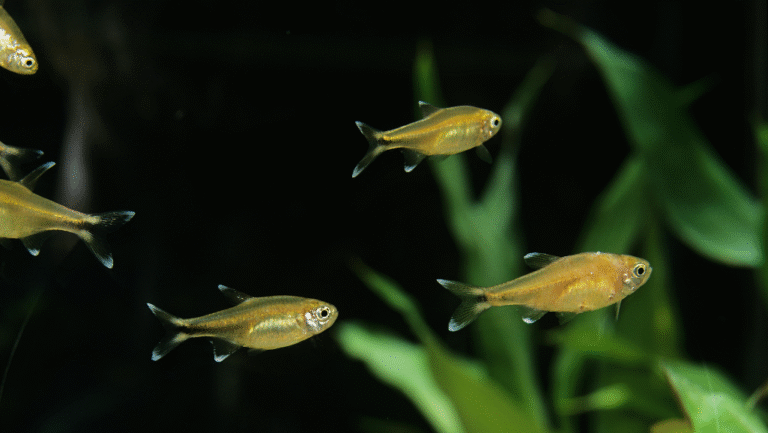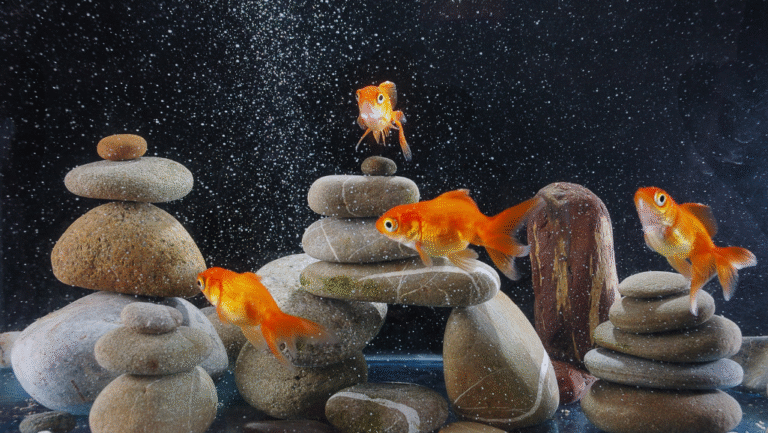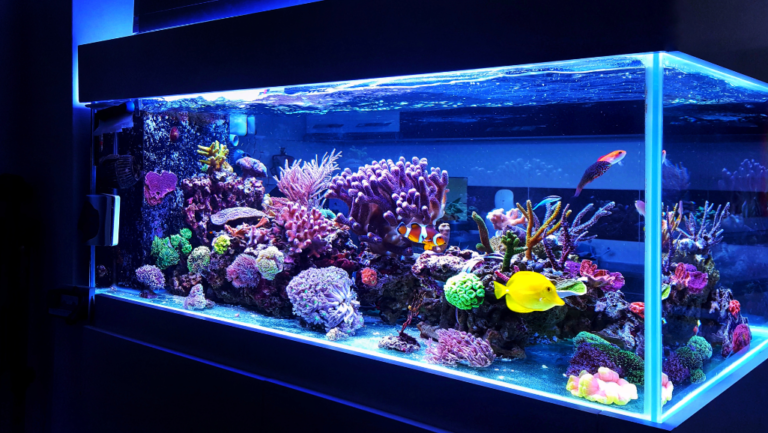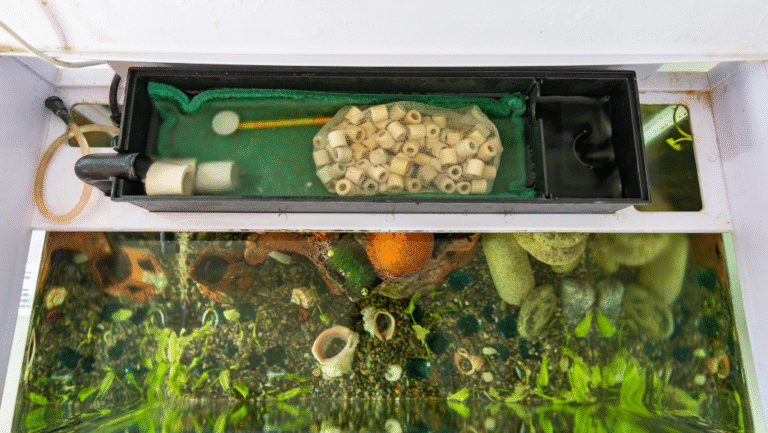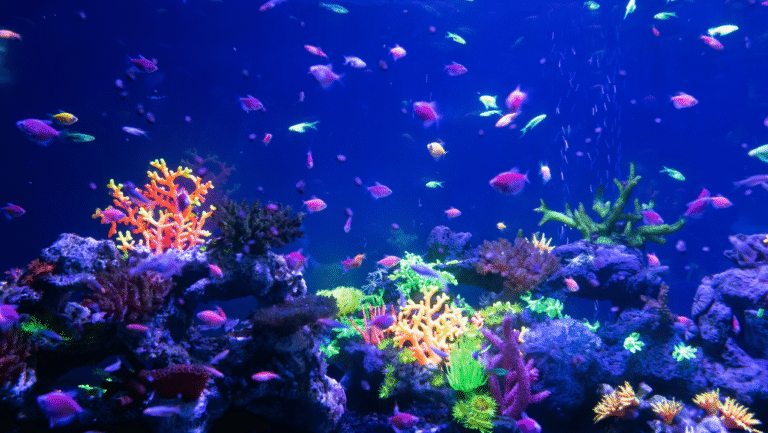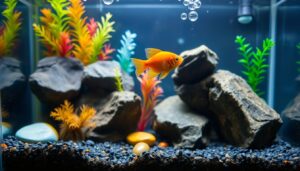Imagine your aquarium as a living, vibrant tapestry of greens and calm waters. It’s a place where fish swim through lush foliage and enjoy peace. This dream is real with top floating aquarium plants.
These plants are not just pretty; they help keep your tank balanced. They add oxygen, provide shelter for fish, and clean the water naturally. Picture your fish swimming among the soft leaves of floating plants for aquariums like Water Lettuce or Salvinia Minima.
Discover the beauty and benefits of the best floating aquarium plants. They make your tank more lively and healthy. For more on floating plants and how to add them to your tank, check out The Shrimp Farm.
Key Takeaways
- Top floating aquarium plants enhance tank beauty and ecosystem health.
- Plants like Salvinia Minima and Duckweed are both visually appealing and functional.
- Floating plants provide oxygen, shelter, and natural water filtration.
- Consult The Shrimp Farm for a guide on selecting and nurturing floating plants.
- Balance aesthetics with ecological benefits for a thriving aquarium habitat.
- Create a serene underwater world that supports the well-being of aquatic creatures.
The Aesthetic and Environmental Benefits of Floating Plants for Aquariums
Adding floating plants for betta tanks or any freshwater setup is more than just making it look good. They play a key role in both the beauty and health of your tank. A 2021 study found that about 70% of aquarium lovers choose floating plants for their beauty and health benefits.
The Dual Role of Floating Aquarium Plants: Beauty and Oxygenation
Floating aquatic plants are great at adding oxygen to the water. This is crucial for keeping fish and other creatures healthy. Plants like Hornwort and Salvinia help by taking in carbon dioxide and releasing oxygen, improving water quality. They also make the tank look more natural and beautiful.
Creating a Safe Haven for Aquatic Life
Fish, like bettas, love the shelter that popular floating aquarium plants like Duckweed and Water Lettuce provide. These plants create a thick layer that blocks light and gives fish a place to hide. This helps reduce stress and supports a peaceful environment for all tank creatures.
These plants also help fight algae by blocking too much light and competing for nutrients. This makes them a great choice for anyone wanting a beautiful and healthy tank.
Floating plants offer a safe place and help with oxygen levels. They also play a big part in keeping the tank’s ecosystem balanced. Whether you’re managing your tank’s needs or adding depth, floating plants can change your aquarium’s look and function.
For more on cold-water fish species for aquariums, check out this article.
Optimizing Floating Plant Growth: Lighting, Nutrients, and Filtration
Floating plants add beauty and balance to aquariums. They help keep the water clean and healthy. Learning about floating plant growth, aquarium plant care, and floating plant filtration can turn a simple tank into a lush garden.
The Impact of Lighting on Plant Health and Tank Aesthetics
Lighting is key for floating plants like Amazon Frogbit and Water Lettuce. Good lighting mimics sunlight, boosting photosynthesis. This is crucial for plant health and growth.
Modern LED lights can be set to match natural light. They help plants grow and make the tank look amazing.
Nutrient Absorption: The Key to Clean Water and Plant Growth
Keeping water clear and healthy needs good nutrient management. Plants like Salvinia and Duckweed help by removing excess nutrients. This stops algae and keeps the water clean.
Feeding these plants the right nutrients helps them grow. This makes them key to keeping your tank vibrant and healthy. Learn more about keeping your tank lively.
Choosing the Right Filtration for Floating Aquatic Plants
Filtration is important for healthy floating plants. Plants like Salvinia do best in still water. This means using gentle filters that don’t stir up the water too much.
Special filters for delicate plants keep the water clear. They make sure plants get enough light and nutrients. This makes your tank look great and stay healthy.
By carefully managing light, nutrients, and filtration, floating plants can make your tank beautiful and healthy. They offer a perfect mix of function and beauty.
Popular Floating Aquarium Plants for Your Tank
Make your freshwater aquarium better with top rated floating aquarium plants. About 70% of people with aquariums use floating plants to make their tanks look good and stay balanced. These plants not only look nice but also help keep the water healthy.
Sourcing Top Rated Floating Aquarium Plants
Choosing floating plants for your aquarium is all about looks and care. Water Lettuce and Salvinia are great because they’re easy to take care of and look good. Learn more about different floating plants to pick the best ones.
Benefits and Challenges of Different Floating Plant Species
- Salvinia: It grows fast and spreads easily, helping to clean the water by removing nitrates.
- Water Lettuce: It creates a thick layer that protects fish from sunlight and fights algae. But, it needs regular trimming to keep it from taking over.
Understanding the good and bad of these plants helps create a great home for your fish.
Species Spotlight: Salvinia, Duckweed, and Water Lettuce
Let’s look at some plants that can really change your aquarium:
- Salvinia: It’s easy to grow and keep, making it a favorite among floating plants for aquariums.
- Duckweed: It’s good at cleaning the water but can spread too much if not kept in check.
- Water Lettuce: Its pretty shape and easy spread make it popular, but it needs careful management to keep it from taking over.
Duckweed and Water Lettuce are big hits in home aquariums, chosen by over 50% of aquarists.
Adding top rated floating aquarium plants like Salvinia and Water Lettuce makes your aquarium look great and keeps it healthy. Whether you’re new or experienced, these plants will make your aquarium better.
Integrating Top Floating Aquarium Plants into Your Aquascape
The art of aquascaping with floating plants combines beauty and function. It changes how we see and enjoy our aquariums. By using floating plant aquascape ideas, you can create a peaceful balance that supports life in your tank.
Aquarium design is more than just putting plants in water. It’s about making a living, beautiful ecosystem. When using floating plants, it’s key to cover the surface right. Experts say 40-60% coverage is best. This lets submerged plants get enough light and keeps algae away. It also gives shelter and breeding spots for fish and other creatures, making your tank more diverse.
There are many ways to use floating plants in your aquascape. One method is to use airline tubing to hold plants in place. This lets you arrange plants carefully, creating layers and sections that look great. This method is great for styles like the Nature Aquarium, which needs careful planning to look natural.
- Nature Aquarium: Inspired by Japanese gardening, this style focuses on creating a serene and naturalistic landscape with a blend of floating and submerged plants that mimic terrestrial vistas.
- Iwagumi: This minimalist approach uses stones as the dominant feature, surrounded by low-growing aquatic plants, including strategically placed floating varieties to heighten the natural look.
- Dutch Aquarium: Known for its lush and colorful vegetation, floating plants in a Dutch Aquarium are used to add depth and contrast against the typically vibrant backdrop.
When planning your floating plant aquascape, think about the plants, their placement, and how they work with light, filtration, and tank life. A well-kept floating plant cover can greatly improve water quality and light, which are key for a lively aquascape.
Success in aquarium design and using floating plants comes from knowing and using the right balance, space management, and ecological harmony. With these, your aquascape will not only flourish but also become a stunning part of your home or office.
Care and Maintenance of Your Floating Plants for Aquariums
Keeping your floating plants vibrant and lush is key to your aquarium’s beauty and health. With 11 different floating aquarium plant species, you can pick ones that are easy to care for and grow fast. This ensures your plants stay healthy and your tank looks great.
Pruning Techniques for Healthy Plant Management
Pruning is more than just upkeep; it’s a way to keep your plants thriving. Neglecting pruning can lead to overcrowding, blocking light and disrupting water flow. By pruning correctly, you can encourage plant growth and ensure all plants get enough light.
Some plants, like Duckweed, grow quickly and absorb nutrients well. But, they can shade out other plants if not pruned regularly.
Monitoring Water Quality for Optimal Plant Health
Keeping an eye on water quality is essential for your plants’ health. Clean water with stable pH levels helps plants grow well. If leaves turn yellow or plants start to wilt, it might mean they need more nutrients or light.
Plants like Water Lettuce and Frogbit not only look good but also help absorb nutrients. This is important to prevent algae growth, which can happen if there are too many nutrients in the tank.
The Importance of Quarantine Procedures for New Plant Additions
Quarantining new plants is crucial before adding them to your tank. It protects your ecosystem from pests and diseases. With the risk of illegal plants, it’s important to choose wisely.
Each plant, like Salvinia, which fights algae, or Water Lettuce, which can help with allergies and fungal infections, can benefit your tank. Just make sure to quarantine and care for them properly.
